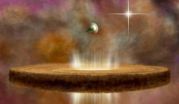(Press-News.org) This news release is available in French.
What if the use of a product influenced your perception of it, making you even more susceptible to its positive aspects and altering your understanding of its drawbacks? This is precisely what happens with cigarettes in chronic smokers, according to a recent study by the Institut universitaire en santé mentale de Montréal and Université de Montréal.
The study showed that chronic smokers have altered emotional reactions when they are exposed to negative and positive images associated with tobacco. "We observed a bias depending on how smoking is portrayed ", explained Le-Anh Dinh-Williams, a student at the Centre de recherche de l'Institut universitaire en santé mentale de Montréal and the study's first author. "For example, the brains of the smokers in our study were more aroused by images that showed smoking in a positive light than by images that encouraged them to stop. They were also more affected by aversive non-smoking related images than by images of the specific negative consequences of smoking."
In Canada and the United States, approximately 20% of adults smoke cigarettes despite knowing its adverse effects. "We wanted to understand why knowing about the negative health impacts of tobacco does not prevent smokers from lighting up," explained Ms. Dinh-Williams.
Approximately 70% to 95% of smokers who quit their bad habit will, despite their best efforts, start smoking again within one year. "Many factors make it difficult for people to quit. Part of the explanation could certainly be because cigarettes 'trick' the brains of smokers," stated Stéphane Potvin, a co-author of the study and researcher at the Institut universitaire en santé mentale de Montréal and Assistant Professor in the Department of Psychiatry at Université de Montréal. "Specifically, we discovered that the brain regions associated with motivation are more active in smokers when they see pleasurable images associated with cigarettes and less active when smokers are confronted with the negative effects of smoking."
Using neuroimaging techniques, the study researchers compared the emotional reactions of 30 smokers as they looked at aversive smoking-related images (e.g., lung cancer) compared to other aversive images (e.g., an old man on his deathbed) as well as appetitive smoking-related images.
INFORMATION:
Statistics
Smokers have a 3 to 9 times greater risk of developing cancer, lung disease or heart problems. Cigarettes are also associated with fertility problems, premature aging, a lack of hygiene and social stigmatization, and they have a negative impact on the health of other people who are exposed to second-hand smoke.
Overall, 1 out of 2 smokers will die from tobacco use.
Note: The University of Montreal is officially known as Université de Montréal
Smokers' brains biased against negative images of smoking
2014-03-10
ELSE PRESS RELEASES FROM THIS DATE:
All paths lead to Rome, even the path to condensed matter theory
2014-03-10
Italian physicist Carlo Di Castro, professor emeritus at the University of Rome Sapienza, Italy, shares his recollections of how theoretical condensed matter physics developed in Rome, starting in the 1960s. Luisa Bonolis, a researcher at the Max Planck Institute for the History of Science in Berlin, Germany, invited Di Castro to reflect upon his research career, which he did in an interview published in EPJ H.
In this unique document, Di Castro talks about his upbringing during the second World War. He also explains how this childhood experience later influenced his ...
Two-dimensional material shows promise for optoelectronics
2014-03-10
A team of MIT researchers has used a novel material that's just a few atoms thick to create devices that can harness or emit light. This proof-of-concept could lead to ultrathin, lightweight, and flexible photovoltaic cells, light emitting diodes (LEDs), and other optoelectronic devices, they say.
Their report is one of three papers by different groups describing similar results with this material, published in the March 9 issue of Nature Nanotechnology. The MIT research was carried out by Pablo Jarillo-Herrero, the Mitsui Career Development Associate Professor of Physics, ...
Doctors often uncertain in ordering, interpreting lab tests
2014-03-10
A survey of primary care physicians suggests they often face uncertainty in ordering and interpreting clinical laboratory tests, and would welcome better electronic clinical decision support tools.
The results of the survey, sponsored by the U.S. Centers for Disease Control and Prevention, were published in the March-April issue of The Journal of the American Board of Family Medicine.
"The optimal testing pathways to arrive at correct diagnoses is changing, so it is difficult for primary care physicians to keep up with new and efficient testing algorithms," says Dr. John ...
Study finds pill may represent promising treatment for stubborn blood cancers
2014-03-10
(WASHINGTON, March 10, 2014) – A pill that suppresses a key regulator of cancer growth may provide hope to relapsed leukemia and lymphoma patients running out of treatment options for their aggressive, treatment-resistant disease, according to three reports* published online today in Blood, the journal of the American Society of Hematology.
Patients with blood cancer are typically administered a combination of chemotherapy and immunotherapy, the latter using the body's own immune system to help fight disease, as a first line of treatment. While chemotherapy has traditionally ...
Moffitt Cancer Center pioneers worldwide standard in diagnosing melanoma
2014-03-10
Moffitt Cancer Center researchers have been instrumental in making significant improvements to the diagnostic procedure called sentinel node biopsy for melanoma patients and teaching this procedure to physicians from around the world.
Sentinel nodes are the first lymph nodes to which cancer cells from a primary tumor like melanoma will spread. In the sentinel node biopsy procedure, a radioactive tracer and a blue-colored dye are injected at or near the melanoma site on the skin and tracked to the first lymph node(s). These sentinel nodes are then surgically removed and ...
Genomic test to rule out obstructive CAD may reduce need for more invasive diagnostics
2014-03-10
New Rochelle, NY, March 10, 2014–Nearly $7 billion is spent each year in the U.S. on diagnostic testing of the estimated three million people with symptoms of obstructive coronary artery disease (CAD). A new blood test that detects specific genes activated in individuals with obstructive CAD could exclude the diagnosis without the need for imaging studies or more invasive tests, reducing health care costs, as described in an article in Population Health Management, a peer-reviewed journal from Mary Ann Liebert, Inc., publishers. The article is available free on the Population ...
'Death stars' in Orion blast planets before they even form
2014-03-10
The Orion Nebula is home to hundreds of young stars and even younger protostars known as proplyds. Many of these nascent systems will go on to develop planets, while others will have their planet-forming dust and gas blasted away by the fierce ultraviolet radiation emitted by massive O-type stars that lurk nearby.
A team of astronomers from Canada and the United States has used the Atacama Large Millimeter/submillimeter Array (ALMA) to study the often deadly relationship between highly luminous O-type stars and nearby protostars in the Orion Nebula. Their data reveal ...
Gillian and Hadi spell double tropical trouble around Queensland
2014-03-10
On Friday, March 7 there were two tropical lows located east and west of Queensland, Australia. Those lows organized and intensified into Tropical Cyclone Gillian and Hadi and were caught together in one amazing image from NASA's Aqua satellite. While Gillian has already made one landfall and is expected to make another, Hadi is turning tail and running from the mainland.
NASA's Aqua satellite passed over Queensland on March 10 at 04:00 UTC and the Moderate Resolution Imaging Spectroradiometer instrument known as MODIS captured Tropical Cyclones Gillian in the Gulf of ...
Serpentine ecosystems shed light on the nature of plant adaptation and speciation
2014-03-10
Plants that live in unusual soils, such as those that are extremely low in essential nutrients, provide insight into the mechanisms of adaptation, natural selection, and endemism. A seminal paper by Arthur Kruckeberg from 1951 on serpentine plant endemism has served as a solid bedrock foundation for future research on the link between natural selection and speciation. A recent article in the American Journal of Botany focuses on how this paper has influenced subsequent research on local adaptation, evolutionary pathways, and the relationship between climate, soils, and ...
'Older people denied proper access to cancer care' according to Queen's study
2014-03-10
Older people globally are being denied proper access to cancer care, according to an editorial by Queen's University Belfast academic, Professor Mark Lawler of the Centre for Cancer Research and Cell Biology.
In an editorial in the BMJ (British Medical Journal) Professor Lawler said: "there is increasing evidence from around the world that elderly patients are being 'undertreated', leading to a 'survival gap' between older and younger patients.
"We need a fundamental change in cancer policy for the elderly patient. Our current practices are essentially ageist, as we ...



